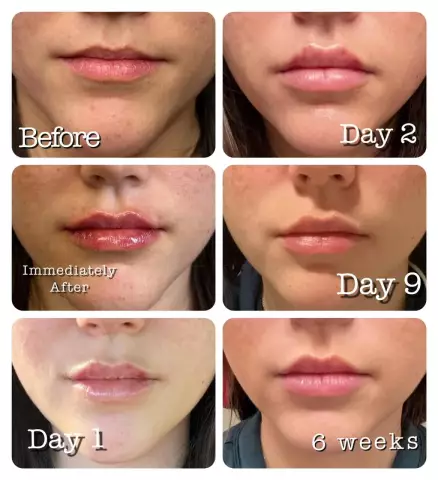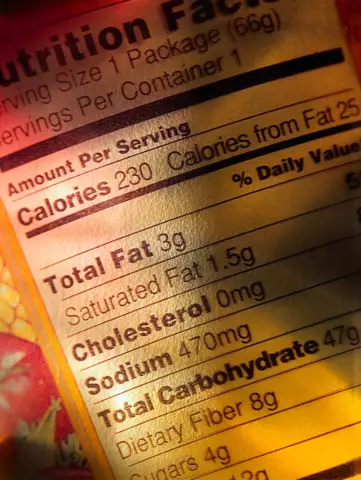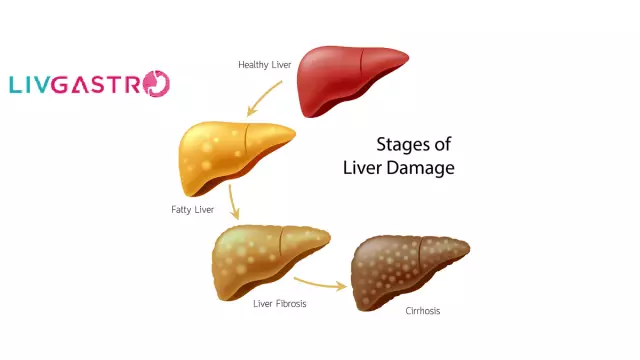- Author Rachel Wainwright [email protected].
- Public 2023-12-15 07:39.
- Last modified 2025-11-02 20:14.
Vegetovascular dystonia - is it a mythical or real disease?
By definition, doctors have several opinions about the VSD. Some are irrefutably convinced that this disease exists, while others argue that it does not exist, and the patients who have been diagnosed with this are under-examined. And a separate category of specialists considers VSD to be a controversial diagnosis, and this term is most often used when there are not enough grounds to assert that the patient has arterial hypertension or neurosis.
The term VSD is considered outdated, but is still used by doctors. This disease is absent from the International Classification of Diseases. Vegetovascular dystonia is a dysfunction of the autonomic nervous system and its more correct name, which is present in the ICD, somatoform autonomic dysfunction of the nervous system, implying an inconsistent effect of the sympathetic and parasympathetic parts of the autonomic nervous system on the general state of the human body, manifested by a violation of hemodynamics and vascular tone.

VSD symptoms
- pain in the region of the heart;
- interruptions in the work of the heart;
- a feeling of suffocation;
- dyspnea;
- headache;
- feeling of lack of air when you sigh;
- the need for deep breaths;
- sleep disturbance;
- dizziness;
- inconsistent blood pressure;
- sweating or chilliness;
- decrease and increase in temperature;
- drowsiness, insomnia;
- reduced performance;
- pain in the abdomen;
- vomiting, nausea;
- diarrhea;
- constipation.
Vegetovascular dystonia can be latent, felt constantly or in seizures.
There are several types of autonomic seizures, which directly depend on the predominance of the influence of the sympathetic or parasympathetic part of the human nervous system:
1. Sympathoadrenal
- increased blood pressure;
- feeling of panic;
- headache;
- increased heart rate;
- numbness of the upper and lower extremities;
- shaking hands.
2. Vagoinsular
- dizziness;
- lowering blood pressure;
- darkening in the eyes;
- loss of consciousness.
3. Mixed
both of the previous options appear simultaneously
How is VSD diagnosed
To diagnose VSD, it is necessary to undergo examinations by a cardiologist, endocrinologist, neuropathologist, ophthalmologist and gastroenterologist, and pass the necessary tests. Only in this way will the attending physician be able to exclude the presence of pathologies that can cause a clinical picture similar to the symptoms of VSD.
Necessary tests to identify VSD:
- analyzes of blood, urine and feces;
- measurement of pulse and blood pressure;
- ECG;
- measuring eye pressure;
- MRI or ultrasound of the vessels of the head.
The reasons for the development of VSD
- hormonal and endocrine disorders;
- dizziness;
- excess weight;
- osteochondrosis, scoliosis, spundelosis;
- nervous overstrain;
- physical exhaustion;
- intoxication;
- traumatic brain injury;
- tumors.
VSD and pregnancy
The birth of a child is a miracle. The expectant mother should not be overshadowed by the fact that she has been diagnosed with VSD. Yes, a baby in the womb is at risk for possible complications. Don't despair. It is possible to reduce the complications of the disease and completely prevent them. To do this, you must undergo a complete medical examination and be observed by a doctor throughout the pregnancy. If you know all the features of this disease, then you have nothing to fear, you will be warned. Pregnancy and vegetative dystonia can coexist normally.
Basic rules for observance with VSD during pregnancy:
- in case of dizziness, frequent headache, high or low blood pressure, consult a doctor;
- observe the daily routine;
- take frequent walks in the fresh air;
- strictly adhere to all the recommendations of doctors;
- listen to relaxing music while relaxing;
- exercise for pregnant women after consulting with your doctor;
- drop all fears, treat everything positively and kindly.
Doctors noticed that if a future mom with a diagnosis of VSD overcame her fear and was not afraid to become pregnant, then she bears the baby well, and after giving birth her health improves significantly. The body of women during pregnancy, so as not to harm the child, mobilizes all its strength and adjusts the work of all organs in the desired mode.
It must be remembered that the signs of VSD are actively manifested in stressful situations, constant experiences and an unstable psychological state. Relatives and families of expectant mothers need to take care that they are protected from all experiences, so that every moment they feel care and love for themselves from loved ones. Pregnancy is an excellent state, and so that it is not overshadowed by anything, women who are expecting the birth of a child need to try to properly set themselves up for childbirth, spend time with good, friendly people and feel happy. And what is very important - do not be afraid of anything. Remember that everything will be fine with you, despite all the problems, obsessive fears and domestic troubles.

VSD in adolescents
Children in our modern world are most prone to stress, especially teenagers. At the age of 12-14, from a frantic pace of life, problems at school, and maybe because of their first unrequited love and passion for computer games, they are diagnosed with VSD. Children of the 21st century are so loaded with studies, sports and a passion for gadgets that they have forgotten how to communicate with each other and relax.
Parents should not despair, in addition to medication, a teenager requires increased attention from adults. But this does not mean at all that you will closely monitor every step of the child, you should not limit him in the desire to have his own personal time and space.
Make time for him on the weekend, visit quiet places to relax together, introduce him to joint walks. Listen to his complaints and requests, pay attention to problems, take time for a confidential conversation, not as parents, but as close friends.
Take care of his health, do not self-medicate. Watch your diet, limit it to sweet. In case your child is indifferent to sports, add to the daily morning exercises or buy a subscription to the pool.
VSD is not a sentence, you can live with it all your life and feel like a healthy person. All you need is desire and a little more patience.
Treatment
To treat the disease, the doctor most often prescribes antihypertensive drugs to stabilize blood pressure, antidepressants for neuroses, attacks of fear and panic, heart drops for tachycardia. Do not self-medicate, it is dangerous to health and can cost life, only a specialist can make the right appointment.
Medicines will not be able to completely cure vascular dystonia. To get rid of the disease, you need to radically change your lifestyle and learn to enjoy every day you live:
- lead a healthy lifestyle;
- give up bad habits;
- take a course of general massage at least 2 times a year;
- do not neglect regular physical activity;
- go in for sports;
- walk in the fresh air;
- strengthen your spine with special exercises;
- optimize your daily routine.
- refrain from long-term stay at the computer;
- avoid stress and mental disorders.
When diagnosed with VSD, sleep at least 8-10 hours. Replace soft pillows and overly hard mattresses with orthopedic ones.
Significantly reduce the time you watch TV and work at the computer, if this is not possible, then take breaks.
Take a walk in the fresh air and look for pleasant sensations in cycling, ice skating, sledding. Swimming and aerobics improve your well-being. It should be noted that bodybuilding, strength sports and high jumps, martial arts classes and exercises with sharp turns of the head and trunk are contraindicated in VSD.

Eat a certain diet. Excess weight is considered almost the main factor in the manifestation of VSD. Limit the consumption of fatty foods, salt, sweets, starchy foods, sausages and smoked meats.
Water treatments, sun and air baths have a beneficial effect on the nervous system. Contrast baths, douches and wipes are recommended.
For all types of VSD, massage is recommended.
Each of us, if desired, can help ourselves to get rid of the disease, for this you need not to despair, adhere to the advice of doctors and take care of your health every day.
Found a mistake in the text? Select it and press Ctrl + Enter.






